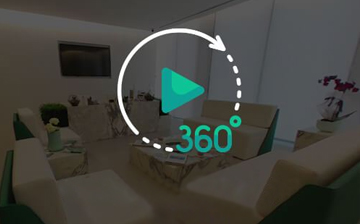
NON-SURGER PILONIDAL SINUS TREATMENT & PILONIDAL SINUS SURGERY
WHAT İS THE PILONIDAL SINUS ?
most pilonidal cysts appear to be caused by loose hairs that penetrate the skin. Friction and pressure —force the hair down into skin. in the coccyx region, and settle under the skin from the pores or cavities are called ingrown hairs
This discomfort, which negatively affects the work and social life of individuals, also manifests itself with abscesses and infections from time to time.
IN WHICH REGIONS OF THE BODY IS PILONIDAL SINUS?
The hairs accumulated in the coccyx settle under the skin more easily and make a nest. For this reason, ingrown hair usually occurs in the midline of the body .
However, ingrown hair may not only occur in the coccyx.
Although rare, it can also be seen in the belly button and lower part of the nose.
WHAT CAUSES İNGROWN (PILONIDAL SINUS)?
 Hastalığın neden olduğu konusunda iki teori bulunmaktadır. İlk teori doğuştan olduğuna yöneliktir. İki vücut yarımının birleştiği sırada bazı kıl köklerinin ters yerleşmesi ve içeri doğru büyümesiyle ortaya çıkmış olabileceğidir. İkinci teori ise sonradan oluşan bir rahatsızlık olduğudur. Temizlik ve hijyen kurallarına uymamak, sırt ve saç kıllarının sert yapıda olması, kilo fazlalığından dolayı kuyruk sokumuna dökülen tüy ve kılların bölgeye yapışması ve vida etkisiyle kuyruk sokumu bölgesine giriş yapması ve kistik bir yapı oluşturmasıdır.
Hastalığın neden olduğu konusunda iki teori bulunmaktadır. İlk teori doğuştan olduğuna yöneliktir. İki vücut yarımının birleştiği sırada bazı kıl köklerinin ters yerleşmesi ve içeri doğru büyümesiyle ortaya çıkmış olabileceğidir. İkinci teori ise sonradan oluşan bir rahatsızlık olduğudur. Temizlik ve hijyen kurallarına uymamak, sırt ve saç kıllarının sert yapıda olması, kilo fazlalığından dolayı kuyruk sokumuna dökülen tüy ve kılların bölgeye yapışması ve vida etkisiyle kuyruk sokumu bölgesine giriş yapması ve kistik bir yapı oluşturmasıdır.
There are two theories about the cause of the disease. The first theory is that it is innate.
It may have arisen with the reverse placement of some hair follicles and their inward growth at the junction of the two body halves.
The second theory is that it is a later disorder.
Failure to comply with the cleaning and hygiene rules, the hard structure of the back and hair bristles, the hairs and hairs spilled into the coccyx due to excess weight stick to the area and enter the coccyx area with the effect of the screw and form a cystic structure.
Another reason is sedentary life.
It is known by everyone that a sedentary life invites many diseases.
Continuous sitting, especially sitting with hair spreaded , is the main cause of ingrown hairs.
Individuals who work at a desk are more likely to have ingrown hairs than those who move constantly.
As a matter of fact, studies have shown that sitting upright significantly reduces the incidence of ingrown hairs.
In this case, it is of great benefit to prefer sitting in an upright position while working at desk jobs or in daily life.
The period of World War II can be shown as an example of the work done by sitting all the time.
During the war, most of the soldiers who had to use jeeps constantly had ingrown hairs.
In fact, after a certain time, these cases were called "jeep disease".
In addition to these reasons, obesity and excessive sweating are also important causes of ingrown hairs.
When it is cleaned, the hair roots become hard and it becomes easier for the hard hairs to settle under the skin.
For this reason, it is not recommended to use a razor blade for hair cleaning.
The susceptibility to hair follicle inflammation is also an effective reason for the occurrence of ingrown hairs.
If the sacral dimple becomes infected, ingrown hairs may occur.
WHO CAN SEE HAIR RETURN (PILONIDAL SINUS)?
Hair loss is 3-4 times more common in men than women.
usually Pilonidal sinus disease, colloquially known as ingrown hair traditionally
It is most common between the ages of 15 and 35.
Hair regrowth, which is rarely seen in people over the age of 45, is more common in professions that require sitting for a long time such as long-distance drivers and horseback riding, barbers, dog groomers, sheep clippers and people who lead a sedentary life.
WHAT ARE THE SYMPTOMS OF PILONIDAL SINUS?
In the initial phase of ingrown hair, symptoms that will not disturb the patient may occur. In the case in which the individuals delay the treatment the disease will progresse.
As the disease progresses, the symptoms can become unbearable.
Hair loss manifests itself with the discharge in the initial stage.
Patients often do not understand where the discharge is coming from.
When the abscess combines with microbes, it becomes a discharge and turns green in color.
This discharge is foul-smelling and sometimes bloody discharge can be seen.
Detailed physical examination is sufficient for diagnosis.
While the diagnosis is made more easily in patients who have been incarcerated and infected before, the presence of small holes called pits in the midline in the coccyx region in detailed examination is an important criterion for diagnosis in patients who have not had an abscess or infection.
Hair loss sometimes resembles acne.
Some of the patients sometimes think that the abscess is an acne and they can burst it themselves.
However, blasting the ingrown abscess does not eliminate this problem.
It should be known that ingrown hair is full of pus as well as hair and other debris, and everything cannot be removed by popping it.
In addition, it will be risky in terms of developing a new infection or scarring as a result of the patient squeezing and bursting the wound.
In other words, it is a disease that will not go away on its own in any way and you will suffer unless it is treated.
In long-term and untreated cases, chronic infections may occur under the skin as a result of inflammation of the cyst cavity.
In severe periods of this infection, fever and inflammation accompany each other.
Patients present clinical findings with complaints such as 'there is swelling on the coccyx', 'I have difficulty sitting' and 'pain'.
Itching and redness in the coccyx are also among the symptoms of ingrown hair. Fever may also be seen due to abscess.
The reason for the bad smell seen in ingrown hair is the inflammation and abscess of the related area.
The discharges coming out of the sinüs hole combine with microbes and cause the formation of a foul-smelling and inflamed abscess.
The size of the swelling occurring in the area of ingrown hair varies according to the density of the hairs accumulated in the area.
The pain that occurs when the cyst becomes an abscess by stretching can become unbearable.
The person may not be able to sit and walk because of this pain. The presence of pain in which even daily activities cannot be performed indicates that the disease is in the last stage.
WHAT ARE THE OPERATIONS OF PILONIDAL SINUS DISEASE?
Pilonidal sinus, that is, ingrown hairs; It presents in three different forms as acute pilonidal sinus abscess, chronic pilonidal disease and chronic recurrent pilonidal sinus.
In acute pilonidal sinus abscess, the sinus openings are occluded and with the formation of secondary bacterial infection, it manifests itself with redness, swelling, temperature increase and severe pain in the midline of the body, that is, in the coccyx.
The patient has a fever, but pain is prominent.
İn the examination most patients describe a painless discharge. Diagnosis is made by the presence of a mild discharge and sinus openings in the coccyx .
In chronic recurrent pilonidal sinus, the abscess may recur with exacerbation from time to time.
In this case, fistula mouths can be seen further away from the existing place.
Diseases such as simple abscesses, anorectal fistula, tuberculosis, hidradenitis suppurativa should be considered in the differential diagnosis.
HOW IS PILONIDAL SINUS DIAGNOSIS?
Detailed physical examination is sufficient for the diagnosis of the disease.
The diagnosis is made more easily in patients who have had abscesses and infections before.
However, in patients who have not had an abscess or infection before, the presence of small holes called pits in the midline in the coccyx region in detailed examination is a very important criterion for diagnosis.
If the infection is present and severe, blood tests may be done for diagnosis.
Imaging tests are usually not needed in cases of pilonidal cysts.
İngrown hair sometimes resembles acne.
So much so that some of the patients may think that the abscess is a pimple and can burst it themselves.
However, blasting the abscess does not eliminate this problem.
It should be known that ingrown hair is full of hair and other debris, except for the abscess, and everything cannot be removed when blasted.
In addition, it will be risky in terms of developing a new infection or scarring as a result of squeezing and bursting the abscess by the patient.
In other words, ingrown hair is a disease that will not go away on its own in any way, and unless it is treated, it is a disease that will make the patient to suffer alot .
If ingrown hair is not treated, the problem will get worse.
Chronic infections under the skin may occur with inflammation of the cyst cavity in long-term and untreated ingrown hairs.
In severe periods of this infection, high fever and inflammatory discharge accompany each other.
In addition, in cases of pilonidal sinus, that is, ingrown hairs that are not treated for a long time, cancer may occur, although very rarely. In this case, cancer recurrence and life expectancy are poor.
Patients who encounter ingrown hair may sometimes mistake the sac in the coccyx for acne and prefer the wrong department and doctors.
There are many different methods in the treatment of pilonidal sinus.
When choosing a doctor, it is very important to choose specialist doctors who are experienced in the diseases of the rectum , which is the last part of the large intestine.
In addition, since surgical methods will be used in the treatment, we should take care that the preferred place for surgery is clean ,hygienic and in the sufficient medical infrastructure .
In the treatment of pilonidal sinus, it is aimed to clean this cystic cavity filled with hair and then the cleaned area filled in with tissue .
In addition, the aim of the treatments is to ensure that the patient experiences minimal pain and to return to her work and social life in a short time.
There is no standard surgical treatment that can be applied to every patient in ingrown hair.
Today, surgical treatments for ingrown hairs are more preferred in early-stage cases because of the troublesome post-operative period.
Minimally invasive treatments; Microsinusectomy is called the Crystallized Phenol method and the Laser Method called LAFT.
Rhomboid Excision-Limberg Flap method, Cleft Lift- Kalidakis method and Bascom method are the most preferred surgical methods in cases of advanced ingrown hair and in cases not suitable for microsurgery method.
(PILONIDAL SINUS) MINIMAL INVASIVE TREATMENTS
Microsinusectomy
Microsinusectomy method, which is a successful method used for the treatment of ingrown hair, is an improved version of the bascom surgical method.
It is a method that can be performed in a clinical atmospher and can be applied in a short time period of about 10 minutes.
The procedure is performed with local anesthesia and there is no pain or ache after the treatment.
The microsinusectomy method, which is a method that can be used in patients with a single pit hole, with the help of a scalpel emptifaying along the sinus cavity to the coccyx with a diameter of about 1 cm and it is the primary closure of this region.
A period of dressing is required after the procedure.
Before dressing, it is necessary to take a shower every day and wash the area with olive oil soap.
The dressing should be renewed after each bath. It is a very easy dressing and can be done at home.
Another important issue is hair cleaning.
As we mentioned before, ingrown hairs occur due to hairs falling from the neck and back.
For this reason, hair should not be allowed to grow, short hair should be shaved.
The coccyx should be cleaned of hair, starting from the back and also above the hips.
Hair removal cream, spray, etc. if possible, It can be cleaned using laser method which is the most beautiful method, However, the laser method should be started after the dressing process is over and the wound site has healed.
Especially in the summer, patients with ingrown hairs are not treated with the thought of not being able to go to the sea or the pool, and they postpone it.
However, this thought is wrong.
As with any disease, early diagnosis and treatment are very important in ingrown hairs.
There is no harm in swimming in the sea after the treatment of ingrown hairs and microsinusectomy.
Only individual pool can be used , but puplic pool is band .
The only thing to be careful about is not to wear wet swimsuits after swimming in the sea and the pool, and to wear dry clothes. In addition, the dressing should be changed after getting out of the sea and the pool.
After microsinusectomy treatment, patients can return to their work and social life quickly, so the preference rate is high, and an improvement of nearly 70 percent has been observed in recent studies.
Crystallized Phenol method
Crystallized phenol treatment, which is a very successful method used for the treatment of ingrown hair, can be applied in a clinical atmospher and in an average of 20 minutes.
The procedure is performed with local anesthesia and the patients do not feel pain after the procedure.
In addition, after the treatment, patients can continue their work and social lives.
Crystallized phenol treatment can be applied in cases with one or more ingrown hairs in the coccyx.
the bristle is used to expand the cyst cavity then brushing with a tool called a micro motor enter the holes, to clean the cyst wall and hairs by rotation , after that place rock salt-like stones called Crystallized Phenol inside the cyst cavity .
Crystallized Phenol is a strong chemical debridement compound.
Thanks to the crystallized phenol treatment, the hair follicles and cyst wall in this area are broken down and the recurrence of the disease is tried to be prevented.
After the procedure, dressing should be done for a while and the area should be washed with olive oil soap by taking a shower every day.
Dressing should be renewed after each bath
It is a dressing that can be made at home and it is quite easy. Hair cleaning is very important for the formation and recurrence of the disease.
Hair should be shaved before the hair is allowed to grow. Starting from the back, the hairs in the coccyx, including on the hips, should be cleaned.
it can be cleaned using Hair removal cream, spray, and if possible using the laser method which is the most beautiful method,. However, the laser method should be started after the dressing process is over and the wound site has healed.
As in the treatment of ingrown hairs and microsinusectomy, there is no harm in going into the sea after crystallized phenol treatment.
Only individual pools is convenient, but the puplic pool is banned . The only thing to be careful about is not to wear wet swimsuits after swimming in the sea and pool, and to wear dry clothes. In addition, the dressing should be changed after getting out of the sea and the pool.
Laser Therapy
The laser method used for the treatment of ingrown hair is among the minimally invasive treatments.
It is a treatment method that can be performed in a clinical atmospher and can be applied in an average of 30 minutes.
The procedure is performed with local anesthesia and there is no pain or ache afterward.
After the procedure, dressing is required for a while and it can be applied at home due to the ease of dressing.
It is necessary to take a shower every day and wash the area by rubbing with olive oil soap and then changing the dressing.
In addition, hair cleaning should be done regularly. After the wound heals, laser is the best for hair removal.
As in other minimally invasive treatments, there is no harm in swimming in the sea and in the individual pool in laser treatment.
Only after that, there should be a change of swimsuits, not standing in wet clothes. Afterwards, the dressing should be renewed.
Laser therapy is applied in cases with one or more ingrown hairs in the coccyx.
the bristle is used to expand the cyst cavity then brushing with a tool called a micro motor enter the holes, to clean the cyst wall and hairs by rotation .
It is the method of burning and sticking the area by means of radial rays by entering with a fiber optic laser after cleaning the hairs.
Thanks to the laser treatment called LAFT, it is ensured that the patients return to their work and social life quickly.
ADVANTAGES OF NON-SURGERY MINIMAL INVASIVE TREATMENT METHODS OF İNGROWN HAİR TO THE PATIENT
The procedure can be performed only with local anesthesia without giving general anesthesia to the patients.
In surgical treatments, there is a large incision area. Since the incision area is not opened much in minimally invasive treatment methods, it provides much greater comfort to the person.
This comfort makes the patient very satisfied.
While surgical treatments take an average of 1-2 hours, this period is 20 minutes on average in minimally invasive treatment methods.
After minimally invasive treatment methods, the patient does not experience pain and suffering.
Non-surgical treatment methods can be easily applied to patients with systemic diseases (blood pressure, diabetes, heart, bleeding disorders…).
It is not a negative situation for patients with systemic diseases to continue their medications.
After the surgical treatment of ingrown hair, the recovery period is approximately 1 month, and it is forbidden for the patients to lie on their back.
However, patients can return to their work and social life on the same day after non-surgical treatment of ingrown hairs.
The patient needs very frequent dressings after classical ingrowth hair surgeries performed with the surgical method.
After minimally invasive treatments without surgery, recovery becomes much easier with a much smaller dressing.
INGREDIENTS (PILONIDAL SINUS) SURGICAL TREATMENT METHODS
Rhomboid Excision-Limberg Flap Surgery
It is the process of removing the perpendicular tissue, which has a similar appearance to a baklava slice, to include the holes of the pubic hair.
After the tissue is removed, this wide gap is closed by turning it with the help of a piece from the right or left.
This surgical treatment performed in operating room conditions requires patients to rest for a long time.
It limits daily activities such as walking, sitting and standing. After the treatment, patients can return to their normal lives after a difficult period of one month.
When done with the right technique, the recurrence rate is lower than minimally invasive treatments.
Aesthetically, it leaves more scars than minimally invasive treatments and cleft-lift surgery.
Cleft Lift-Kalidakis Surgery
It is the process of surgically removing the area in the form of an inverted raindrop by enclosing the hair follicle holes in the coccyx region.
After the process, the space is filled with the tissues shifted from the right and left.
It is a better procedure aesthetically than the rhomboid excision-limberg flap surgery method, and the recurrence rates are similar.
It is the most preferred method among surgical treatments.
The reason for this is that patients can return to their work and social life faster than other surgical methods.
Bascom Surgery
It is a preferred surgical method in patients whose ingrown hair holes are close to the anus muscles.
It is the process of removing the tissue in the form of the letter h or the inverted letter h, by using the bristle .
After the process, the removed space is filled with the parts removed from the right and left.
The aim is to protect the anus muscles while treating ingrown hairs. The recurrence rate is similar to other surgical methods.
DOES PILONIDAL SINUS RETURN AFTER TREATMENT?
One of the issues that patients are particularly curious about is “Will my disease recur after treatment?” subject .
There are some issues that individuals should pay attention to after treatment in pilonidal sinus disease.
These factors greatly reduce the likelihood of recurrence of the disease.
First of all, patients should pay attention to personal hygiene and cleanliness of the area. It is necessary to take a shower daily and the midline of the body, namely the coccyx, should be cleaned of hair and textile residues.
Also, underwear should be changed daily.
After the treatment, it is necessary to clean the hairs on the back, waist and hips regularly, starting from the nape.
If possible, laser hair removal is optimal.
Pressure should not be applied on the area where the ingrown hair occurs, and tight clothes should be avoided.
Sitting constantly, especially spreading out, should be avoided, and care should be taken to siting upright constantly .
WHAT CAN BE DONE AT HOME FOR ingrown HAIR (PILONIDAL SINUS)?
It is not possible for vertigo to go away on its own.
It definitely needs to be treated.
Sitting in warm water can relieve pain and reduce the chance of the cyst getting worse in the area.
Also, using a pillow while sitting can provide support and comfort.
However, these applications that can be done at home are not for treatment, but for the reduction of pain and swelling.
Non-Surgical Treatment of Ingrown Hair
Ask Your Doctor
For appointments and inquiries, please fill out the form below.







